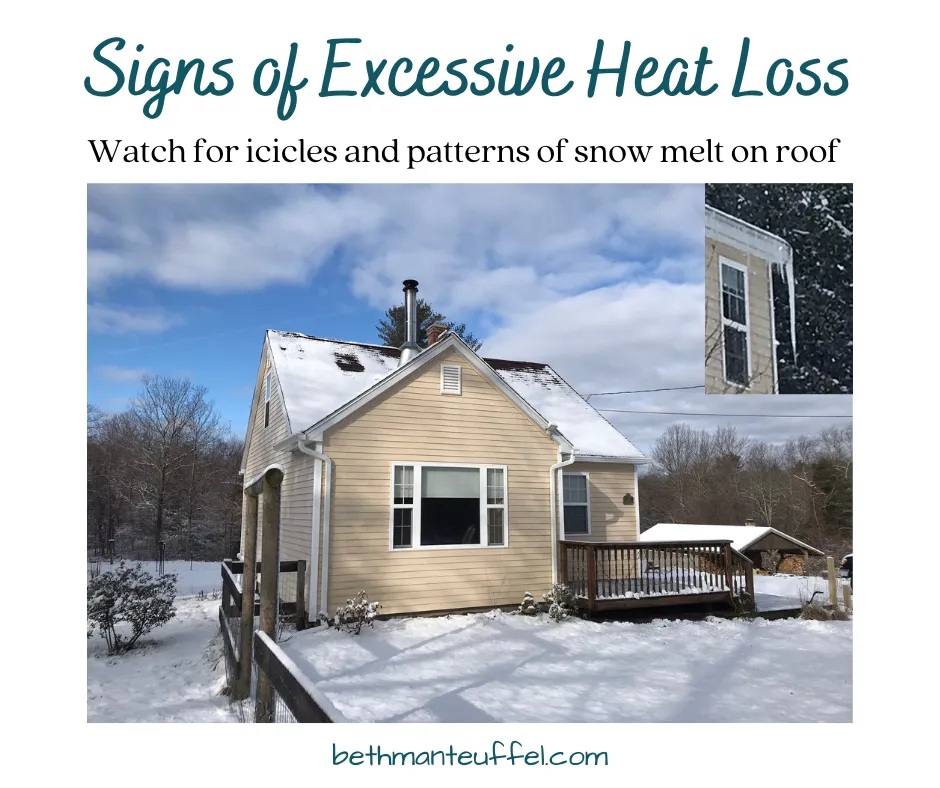Note: You may filter by category below. To use search feature for all categories return to main blog page here.

Energy Usage and Heat Loss
This article contains affiliate links. As an Amazon Associate I earn from qualifying purchases.
Got icicles? Solve problems. Save energy. If you live in a colder climate have you seen icicles along the roof of your home or workplace? Icicles will not form from the sun melting the snow. It forms when snow melts at the bottom layer, where it is in contact with a warm roof. Once the water runs to the base of the roof it drips and refreezes when it hits the cold air ...if it's cold enough. Right now it is too mild where I live to form icicles today, but you can look for snow melt patterns indicating heat loss such as in this photo.
A good comparison to know if it is just the warm weather melting the snow is to compare your roof to that of an unheated structure such as a shed, barn, or unheated garage. In the photo you will see to the bottom right is a barn building beyond. It sits in nearly full sun. None of the snow has melted on that roof yet because it has no heat source and therefore no heat loss to the roof. The air temperature is still cold enough to maintain snow coverage.
If you find premature snow melt on the roof of your home, or icicles, these are signs that heat is escaping too rapidly into the attic space or roof structure due to air leakage or insufficient insulation. The icicle shown below occurred prior to any energy work was done at our home. As you’ll see in the photo we still have a bit of work remaining to resolve the inaccessible roof area between the upper and lower attics, which are hard to insulate. The current state of the roof is a massive improvement compared to Day 1 arriving here. There was so much heat loss initially that it created large ice dams and an ice rink formed outside our front entry. Ice dams lead to other issues and potential water damage. Whether you live in a cold or warm climate, energy audits and thermal camera tools are a great aid in discovering the problem areas. Installing proper air seals and improving insulation can help remedy the issue, helping us to save on energy costs and reduce our carbon footprint.
To receive future blog posts click the button above to opt-in. I also invite you to follow me on my Facebook™ business page, and in the Sustainability & Wellness Seekers Facebook™ Group, linked here. You are welcome to join the community conversations!
Copyright 2023 Beth Manteuffel All rights reserved


